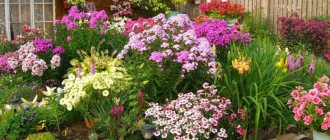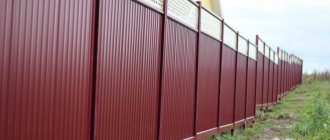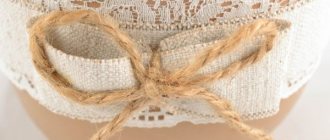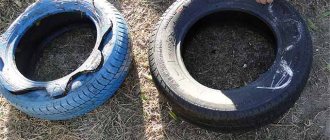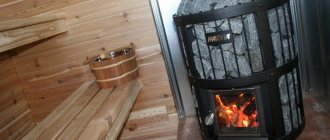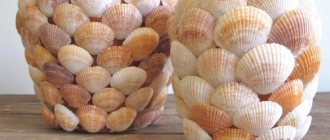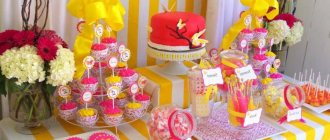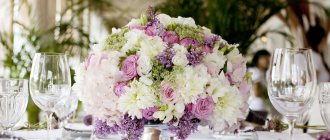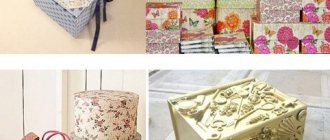Mixborber
It is an elongated flower bed. Typically, such flowering beds are located near buildings and fences. Very often they are used to separate zones of a site.
Plants can be very different in height, but low-growing flowers are planted in the foreground. However, this is a general rule for planting flowers.
raised flower bed
Raised flower beds are becoming increasingly popular. They are placed not on the surface of the earth, but in any container that is raised to a height.
Such flower beds look great on stairs and verandas and create an interesting design in the garden.
Their small size and raised position make them easier to care for. They just require more watering.
Plants living in such flower beds are not at risk of frost on the soil, and pests are less bothered by such flower beds.
Annuals are mainly used as flowering plants. Perennial plants can freeze in winter.
Types of flower beds (names, features and photos)
Classic flower beds
The flowerbed is the most famous, popular type of flower garden, without which it is difficult to imagine even a rather ordinary country house. The shape and size of the flower bed are not regulated in any way, which gives the gardener complete freedom. The flowerbed can be designed in a strict geometric shape: circle, square, rhombus, polygon. Photo:
The option of free contours is also quite possible, if this is dictated by the peculiarities of the style.
A feature of the architecture of the flower bed is the slightly raised central part of the flower bed: this achieves a three-dimensional view from any vantage point. Even if the flowerbed is flat, volume can be achieved by planting taller plants in the center, and the borders of the flowerbed can be marked with a border of low-growing flower crops.
The choice of flowers for a flower bed is unlimited. Delphinium, phlox, peonies, aquilegia, dahlias are an excellent option for a richly decorated center. marigolds, subulate phlox, hostas, and violas in the border bordering the flowerbed .
You may be interested in: Decorative trees of the Moscow region: from classics to exotics
Vertical flower beds - a hit in recent years
A vertical flower garden is not only a magnificent decorative element of landscape design, allowing you to close a cozy place to relax from prying eyes or disguise the not very attractive walls of outbuildings.
Photo:
Vertical gardening using trellises is the best option for separating different zones of the territory.
Beautifully flowering annual vines (morning glory, kobea), perennial plants with abundant flowering (carp, campsis, various variations of clematis) will decorate the arch and create a cozy shadow in the gazebo.
Alpine slide
A rock garden is a corner that imitates a mountain landscape, creating a special mood. A flower garden raised above the ground level, in which rocky mountain plants are planted between stones, is an excellent decoration for any site.
And making it yourself will not be difficult even for novice gardeners. The sizes, shapes of rock gardens and plants for them can be chosen based on the general design style of the area.
It is preferable to plant perennial plants in crevices: ground cover, sedum, lavender, edelweiss, purslane, bergenia, saxifrage, primrose, and carnations.
Photo of the alpine slide:
Dwarf forms of conifers also fit harmoniously: junipers, thujas, mountain pine.
Stone gardens
A rock garden is a rock garden, a rocky flower garden, in which, unlike a rock garden, stones come first, and the flowers only frame and complement the composition of stones. Having once invested desire and effort into creating a rock garden, you can enjoy the view of your creation for several years without much hassle.
You may be interested in: How to create flower beds and flower beds with your own hands: photos of interesting designs
Photo of the rockery:
The choice of plants for a rock garden is more free than for a rock garden, where the emphasis is on rocky vegetation.
Evergreen coniferous trees as vertical accents and spreading junipers, compact forms of mountain pine, ground cover plants (subulate phlox, woolly saxifrage, saxifrage), flowering: carnations, aubrieta edelweiss, sedum, armeria, muscari.
Multi-level mixborders
A mixborder is a complex flower garden, the main principle of which is multi-tiered: taller plants (evergreen conifers, decorative deciduous trees) are the background for lower shrubs.
This can be mock orange, barberry, boxwood, weigela, lilac, which, in turn, serve as a background for decorative foliage and flowering plants. The choice of such plants is huge! Hostas, bergenia, aquilegia, astilbe, phlox, dicentra, echinacea...
The lowest tier is the bordering border of violets, primroses, turf phlox, daisies, irises, and violas. It is important to select plants for the flower garden that live harmoniously in the group and are not aggressors. By selecting species with different flowering periods, you can ensure the longest possible decorative season for mixborders.
Photo example:
Since the mixborder should have irregularly outlined smooth contours, it is advisable to also lay out a stone border that emphasizes the border line.
Front garden
A front garden is a flower garden in the local area, next to the porch or under the windows, usually surrounded by a decorative fence. When deciding what plants are needed for the front garden, the gardener can rely entirely on his own taste.
Photo:
Even a very miniature front garden, no more than 2 m, can create a desire to enter the house, make the entrance more comfortable, hospitable or ceremonial.
You may be interested in: The most beautiful garden flowers with names and photo examples
Discounts
A rabatka is a flower garden planted in a strip, a ribbon up to one and a half meters wide. The purpose of the ridges is to frame garden paths, mark the border of the lawn, and separate functional zones. Photo:
Compact bright flowers - irises, petunias, forget-me-nots, geraniums, violas - are planted densely to form a continuous flowering canvas.
Vertical flower bed
A vertical flower bed will be an interesting design for a garden plot. This design of the flowerbed will not only be the highlight of the garden, but will also help save space for growing more useful crops.
This design will allow you to elegantly decorate the unassuming walls of barns, give gazebos the charm of a green building, and shade structures from the bright sun and prying eyes.
Vertical flower beds located on shaped frames will give the site an unusual look. These can be balls, triangles, animal figures.
Begonia, petunia, and all hanging and climbing plants can be used as plantings.
Rules common to different flower beds
To ensure that flower beds delight their creators with a harmonious combination of all elements and an organic fit into the context of the site, experienced flower growers recommend:
- Plants that bloom profusely, continuously and brightly should be planted in the center of a flower bed with an all-round view or in the foreground of a one-sided view;
- Each type of herbaceous plant is planted in quantities of at least 4-5 units. Those specimens around which the composition is built are planted solo in the composition;
- Low-growing plants should be adjacent to tall plants, evergreens will cover the nakedness of deciduous plants, decorative deciduous plants will fill the voids after flowering of their decorative flowering neighbors;
- Plants with brightly colored foliage are planted closer to the center, and those with pastel-colored leaves are planted closer to the edges of the composition;
- The combination of bright colors and dense greenery will not allow the eye to tire of the variegation and saturation of color;
- If the greenery of forests, the shore of a river or lake is visible beyond the boundaries of the site, a more saturated color palette can be used in flower beds: the eye, tired of bright spots, can relax in the natural landscape. If the area is enclosed by a high fence, surrounded by buildings, or there is no landscape in the future, then it is important to be careful in choosing the color scheme.
Ring flower bed
Do-it-yourself flower beds and flower beds in the form of a ring gracefully encircle trees, sculptures, gazebos, and other decorative elements.
Often large flowerpots with flowers are placed in the center of such a composition. Low-growing plantings are chosen as inhabitants of the ring flower bed.
Perennials for flower beds
First, you must determine the amount of time you can devote to flower beds. If you are engaged in a flower garden and nothing more, this is one thing, but if in addition to this you are also engaged in growing various vegetable crops, then this is completely different. Experience shows that with the second option there is not enough time left for growing and caring for the flower garden.
The flowerbed should be located near the recreation area. It should be visible from a country house or gazebo. Show your imagination when creating a composition.
Most likely, your flower garden will contain perennial flowers. Now let's talk about them.
The flowerbed should be located near the recreation area
You must allocate a place for the future flower bed at the time of planning. Keep in mind that the flower garden should be located close to the recreation area. So that it can be seen from the house or gazebo. When shaping the flowerbed, you can show all your imagination. Since the shape of the flower garden depends entirely on your desire.
In the center of the flowerbed you can place an artificial pond, decorated with natural stones and coastal vegetation.
When creating this flowerbed, keep in mind that the width of the flowerbed should not exceed two meters, since if this rule is not followed, the flowerbed will lose its aesthetic appearance.
Pallet
If you decide to use perennial flowers, you should know that they need a lot of sunlight. They should never be placed in the shade.
Let's talk about proper soil preparation, as this is one of the most important points when planting a flower bed.
- First. Provide good drainage. Standing water has a detrimental effect on flower development. With high humidity, perennials may go dormant.
- Second. Under no circumstances should the soil be dense. There must be air in it. Also, the soil should be quite moisture-absorbing.
You must allocate a place for the future flower bed at the time of planning. Keep in mind that the flower garden should be located close to the recreation area.
Rules for selecting plants
Flowerbeds are laid out in an open place where all flowers receive an even amount of light and water.
Tall plants are planted in the center of the composition, on the far edge or in the corners of the flower garden.
The enclosing flower border should be different in color from the main flower bed.
Perennial plantings will take up a lot of space over time, so they need to be planted quite far from each other, and at first the gaps between them will be perfectly covered by annuals.
For flower bed frames, it is recommended to purchase flowers with a low growth rate.
The ideal flower garden will be a structure that will bloom all summer. To do this, flowers are planted in it, which will gradually replace each other.
When planting, you should take into account the preferences of plants, and place in one place those flowers that will need the same watering, light, and fertilizer.
You should know that some plants will perfectly complement each other, and some (loosestrife, periwinkle) will quickly “kill” their less tenacious neighbors.
Do-it-yourself photos of flower beds will help you decide on the choice of green or blooming flower garden residents.
How to make a multi-tiered flower bed
Another type of spectacular planting at the dacha is a multi-tiered flower bed for growing hanging plants. You can create it from suitable containers of different shapes, ready-made shapes, tires, boards, stone, even broken furniture. The main condition is that the plantings should be arranged in tiers, one above the other.
Popular articles Money flower
- First, the area for the flower bed is prepared.
- The first tier is being built. It should be the strongest and most stable - it will bear the weight of the entire structure.
- The next tiers are installed one above the other so that there is space left to fill with soil.
- Selected plants are planted in the resulting “pockets” of soil.
- A multi-tiered flower bed is watered in stages, starting from the very top.
Numerous photos of flower beds at the dacha fill the Internet. From there you can get a lot of ideas or come up with your own unique options.
Materials for flower beds
To answer the question of how to make a flower bed, very often it is not enough just to plant the right flowers in the right order. A beautiful flower bed most often needs a beautiful frame.
Any objects that have no other use can be used as such a fence.
Flower beds made from tires look good. Car tires can be laid in a row, used as a hanging structure, or created as a multi-tiered flower garden.
Plastic or glass bottles also perfectly decorate flower beds. If desired, they can be painted with multi-colored paints. This decision will please the gardener even when the flowers have not yet bloomed.
A flowerbed made of stones looks great on any site. In addition, it consists of natural materials that will not harm the soil.
Low flower beds can simply be cut into a shell of stones, cobblestones, or bricks. To create more massive structures, a solution of sand and cement is used.
Wooden fencing is also environmentally friendly. For this design, they use unnecessary boards, cut trunks, and make decorative fences for vertical gardening.
Photos of decorating flower beds with your own hands show that flower beds can be made from an old table, broken or unnecessary flower pots, baskets, buckets, barrels, wheelbarrows, bicycles.
Flowerbed made of concrete
This flowerbed is also unusual. Its peculiarity is that the shape of this flower bed can be completely different.
Also, concrete is a very strong and durable material. Therefore, if you want to install a flowerbed for a long time that is not afraid of rain, then concrete will be the best choice for you.
But concrete also has its pros and cons. One of the main ones is that such a flower bed is quite heavy and takes up a lot of space. So, if you want to constantly change the location of your flower bed, this option is not suitable for you.
In addition, the design of this flower bed is rather faceless and inconspicuous. It is not suitable for bright gardens with bright and contrasting colors.
We do not recommend that you make professional concrete flower beds with your own hands, as this can cause complete failure.
It’s better to entrust this work to professionals who will make you a high-quality and good flower bed that will serve you for a long time.
Here are the main types of flower beds. We hope that you will make the right choice and determine which flower bed will look perfect at your dacha.
DIY photo of flower beds
Please repost 
33333333

